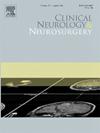远程NIH卒中量表(rNIHSS)的开发和验证,用于护理人员辅助的远程卒中评估
IF 1.6
4区 医学
Q3 CLINICAL NEUROLOGY
引用次数: 0
摘要
目的nih脑卒中量表(NIHSS)评估在卒中评估中具有重要意义。然而,某些NIHSS项目在远程评估时表现出较差的可靠性。我们的目标是开发一种改进的远程版NIHSS (rNIHSS),用于护理人员辅助的远程中风评估。材料与方法对102例脑卒中患者进行评价。一名神经科医生在护理人员的协助下,通过智能手机远程进行NIHSS评估,随后由另一名神经科医生进行床边评估。测试NIHSS总分与各单项得分的一致性。rNIHSS是通过剔除不可靠项目,然后进行信度和效度评估来编制的。结果评分者辅助的远程NIHSS评估具有有限的可靠性(84.3 %的一致性)。rNIHSS通过排除wK值较差的项目:视野、面瘫、消失/注意力不集中和共济失调来开发。轻度脑卒中患者远程rNIHSS评估与床边评估相当,98.2% %受试者的总分差异≤ 2分;然而,在中度和重度中风中,可靠性有限(分别为93.1% %和77.8% %)。rNIHSS评分与床边NIHSS评分、90天和1年修正Rankin量表评分的相关系数分别为0.97、0.88和0.86 (p <; 0.01)。结论护理者辅助rNIHSS远程评估提高了轻度脑卒中患者的可靠性,但对重度脑卒中患者的可靠性有限。需要对rNIHSS进行前瞻性验证。本文章由计算机程序翻译,如有差异,请以英文原文为准。
Development and validation of a remote NIH stroke scale (rNIHSS) for caregiver-assisted telestroke assessments
Objectives
NIH stroke scale (NIHSS) assessment is crucial in Telestroke. However, certain NIHSS items demonstrated poor reliability when assessed remotely. We aimed to develop a modified remote version of the NIHSS (rNIHSS) for caregiver-assisted telestroke assessments.
Materials and methods
We evaluated 102 stroke patients. A neurologist conducted the NIHSS assessment remotely via smartphone, assisted by caregivers, and followed by bedside evaluation by another neurologist. The agreement for total NIHSS scores and each individual item was tested. The rNIHSS was developed by excluding unreliable items, followed by evaluation of its reliability and validity.
Results
Caregiver-assisted remote NIHSS assessments demonstrated limited reliability (84.3 % agreement). The rNIHSS was developed by excluding items with poor wK values: visual field, facial palsy, extinction/inattention, and ataxia. Remote rNIHSS assessments in mild stroke cases were equivalent to bedside assessments, with 98.2 % of the subjects having total scores that differed by ≤ 2 points; however, the reliability was limited in moderate and severe strokes (93.1 % and 77.8 % agreement, respectively). The correlation coefficients for the rNIHSS scores and bedside NIHSS scores, and the 90-day and 1-year modified Rankin scale scores were 0.97, 0.88, and 0.86, respectively (p < 0.01).
Conclusions
Caregiver-assisted rNIHSS remote assessment improved reliability in mild stroke patients but was limited in severe cases. Prospective validation of the rNIHSS is needed.
求助全文
通过发布文献求助,成功后即可免费获取论文全文。
去求助
来源期刊

Clinical Neurology and Neurosurgery
医学-临床神经学
CiteScore
3.70
自引率
5.30%
发文量
358
审稿时长
46 days
期刊介绍:
Clinical Neurology and Neurosurgery is devoted to publishing papers and reports on the clinical aspects of neurology and neurosurgery. It is an international forum for papers of high scientific standard that are of interest to Neurologists and Neurosurgeons world-wide.
 求助内容:
求助内容: 应助结果提醒方式:
应助结果提醒方式:


